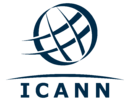Main Page: Difference between revisions
No edit summary |
No edit summary |
||
| Line 33: | Line 33: | ||
<div style="margin:0;background:#bae8bc;font-family:sans-serif;font-size:120%;font-weight:bold;border:1px solid #8AAA88;text-align:left;color:#000;padding-left:0.4em;padding-top:0.2em;padding-bottom:0.2em;">Hot Topic</div> | <div style="margin:0;background:#bae8bc;font-family:sans-serif;font-size:120%;font-weight:bold;border:1px solid #8AAA88;text-align:left;color:#000;padding-left:0.4em;padding-top:0.2em;padding-bottom:0.2em;">Hot Topic</div> | ||
<div style="float:right;margin-left:0.5em;margin-top:0.5em">[[Image:ICANNLogo.png|110px|link=Batching|http://icannwiki.com/index.php/Batching]]</div> | <div style="float:right;margin-left:0.5em;margin-top:0.5em">[[Image:ICANNLogo.png|110px|link=Batching|http://icannwiki.com/index.php/Batching]]</div> | ||
'''Batching''', a term that became especially popular during ICANN 42 in Dakar, | '''Batching''', a term that became especially popular during ICANN 42 in Dakar, refers to the process of dividing applications for the new gTLD program into batches. Given that ICANN expected to receive over 1,000 applications, and that they knew their staff could not process over 500 applications at a time, the Board decided that it would be necessary to create separate batches to process the applications. During the ICANN Board meeting on December 8, 2011 the ICANN pPesident and CEO was tasked to develop a plan for a "secondary time stamp," which will be used to determine the processing order in case multiple batches of applications need to be processed. It was decided, applicants are required to get a time stamp right after the closing of application window if they are interested to be included in the first batches to processed. The ICANN Board approved the secondary time stamp, officially called “digital archery” as the most reasonable method in dividing the new gTLD applications into batches during a special meeting on March 28, 2012. [[Batching|Read more]].</td></tr></table> | ||
<div style="line-height:10px;"> </div> | <div style="line-height:10px;"> </div> | ||
<table style="height:100%;width:100%;background-color:#F3F3F3;border:1px solid #808080;padding:7px 7px 7px 7px"><tr><td width="50%" style="vertical-align:top;"> | <table style="height:100%;width:100%;background-color:#F3F3F3;border:1px solid #808080;padding:7px 7px 7px 7px"><tr><td width="50%" style="vertical-align:top;"> | ||
Revision as of 22:37, 5 June 2012
|
Welcome to ICANNWiki ICANNWiki is the independent, collaborative resource for the ICANN community. The following industry leaders are making this project possible:
| ||||
|---|---|---|---|---|---|
|
In the News
It was confirmed in April, 2012, before the scheduled closure of the application period of ICANN's new gTLD program, that Google was applying for its own branded TLDs (i.e., .google, .youtube), and some other relevant generic terms. Their announcement created excitement that Google's search engine would add significant attention to new gTLDs, and anxiety that the very large player would walk away with some of the most sought after new extensions. On May 31, 2012, Google's Chief Internet Evangelist Vinton Cerf posted on Google's Official blog that the company submitted applications for new TLDs with the following categories: Google Trademarks (example: .google), domains related to Google's Core Business (example: .docs), domains that Improve User Experience (example: .youtube), and domains that are interesting and has creative potential (example: .lol). In a related report, Ad Age Digital reported that Google applied for more than 50 TLDs. The information was revealed by a source within Google who is familiar with the company's application. Read more. |
Hot Topic
Batching, a term that became especially popular during ICANN 42 in Dakar, refers to the process of dividing applications for the new gTLD program into batches. Given that ICANN expected to receive over 1,000 applications, and that they knew their staff could not process over 500 applications at a time, the Board decided that it would be necessary to create separate batches to process the applications. During the ICANN Board meeting on December 8, 2011 the ICANN pPesident and CEO was tasked to develop a plan for a "secondary time stamp," which will be used to determine the processing order in case multiple batches of applications need to be processed. It was decided, applicants are required to get a time stamp right after the closing of application window if they are interested to be included in the first batches to processed. The ICANN Board approved the secondary time stamp, officially called “digital archery” as the most reasonable method in dividing the new gTLD applications into batches during a special meeting on March 28, 2012. Read more. | ||||
|
Categories
|
Resources
|





